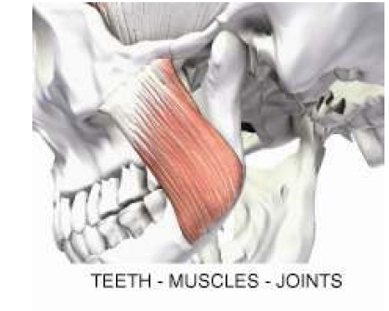Services & Technology: Neuromuscular Dentistry TMJ
What is Neuromuscular Dentistry (NMD)?
About Neuromuscular Dentistry:
 The way your upper and lower teeth come together, (your “bite” or “occlusion”) is an important part of your dental health. Traditional dentistry attempted to treat a misalignment of the upper and lower teeth (a “bad bite” or “malocclusion”) by moving the teeth alone. Neuromuscular dentistry considers the involvement of the entire jaw, including the function of the TMJ (Temporomandibular Joint), the role of the muscles of the face and neck as well as the teeth in correcting occlusal problems.
The way your upper and lower teeth come together, (your “bite” or “occlusion”) is an important part of your dental health. Traditional dentistry attempted to treat a misalignment of the upper and lower teeth (a “bad bite” or “malocclusion”) by moving the teeth alone. Neuromuscular dentistry considers the involvement of the entire jaw, including the function of the TMJ (Temporomandibular Joint), the role of the muscles of the face and neck as well as the teeth in correcting occlusal problems.
If you suffer from a bad bite the muscles and joints can be forced to work hard to compensate or correct the misalignment. The jawbone (the mandible) controlled by the TMJ, has two movements; a rotating or hinge action, which opens and closes the mouth and a gliding action, a movement that allows the mouth to open wider. The coordination of the two actions allows you to talk, chew and yawn. When the jaw is misaligned, both the hard and soft tissues are affected and many problems can result, such as headaches, migraines, jaw pain, neck and shoulder pain, tinnitus (ringing in the ears), and clicking or popping sounds in the jaw joint. Treatment of TMJ is done by determining your optimum jaw position a harmonious relationship between the teeth, the muscles of the face and neck and the jaw joints is created. The result is the neuromuscular bite.
 Neuromuscular Dental Procedures:
Neuromuscular Dental Procedures:
When correcting a misaligned bite, relieving a painful condition or improving your smile, Neuromuscular dental treatment begins by evaluating and studying your jaw and the complex relationship between the jaw joints, teeth and muscles. NMD begins by using a muscle stimulator to deliver a mild electrical stimulus to the muscles of the jaw area, neck and shoulders to cause them to relax. Once your jaw is completely relaxed a more natural and therefore comfortable bite can be determined. Other computerized tests that may be performed are: Jaw Tracking to measure and study the pattern of the jaw opening and closing, Electromyography (EMG) to provide information on the activity of the muscles both at rest and during function, and Sonography, which allows for the assessment of the status of the articular disk and jaw joint. This objective information is then used to assess your current jaw position and determine if your bite should be left as it is or adjusted to a more optimal occlusion.
The Treatment Results:
Once symptoms are relieved and your bite has been stabilized, the next step is to permanently adjust your bite to the correct position. Patients who have received TMJ treatment experience a range of benefits from decreased or eliminated pain and discomfort to better overall health and longer lasting dental restorations.
Dr. Klein has extensive experience with TMJ treatment and works with patients throughout the greater Chicago area. Call today for an appointment!

